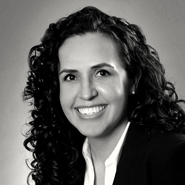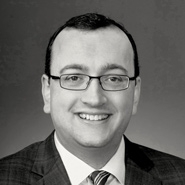Supreme Court of Ohio: No Insurance Coverage Provided for Lost Revenue Caused by COVID-19 Shutdowns
December 16, 2022 – Legal Alerts
The COVID-19 pandemic resulted in many business owners seeking business interruption and extra expense coverage for lost income sustained as a result of mandatory closures of their businesses. At the core of such claims is the issue of whether businesses can obtain coverage for business interruption in the absence of direct physical loss to their business premises from COVID-19. Consistent with national trends, the Supreme Court of Ohio, in Neuro-Communication Servs., Inc. v. Cincinnati Ins. Co., Slip Opinion No. 2022-Ohio-4379, answered this question with a resounding “no.” The Court’s decision likely lays to rest the major issues of whether COVID-19 business interruption claims for risks in Ohio are covered under typical property and casualty policies.
In that case, Plaintiff Neuro-Communication Services, Inc. filed suit in the U.S. District Court for the Northern District of Ohio against Cincinnati Insurance Company and related entities, challenging Cincinnati’s denial of Neuro’s claim under a commercial general liability policy for lost revenue sustained by its audiology practice due to COVID-19 shutdowns. Cincinnati denied the claim on the basis that there was no direct physical loss to Neuro’s premises caused by a covered cause of loss.
Judge Benita Y. Pearson of the Northern District of Ohio certified questions to the Supreme Court of Ohio to help resolve the coverage dispute. Specifically, Judge Pearson asked whether (1) the presence of COVID-19 in the community, (2) particles of the virus on the surfaces of the insured premises, or (3) the presence of a person infected with COVID-19 on the premises can constitute “direct physical loss or damage to property,” which is required to trigger business interruption coverage under many property and casualty policies. The Supreme Court concluded that none of these circumstances presented the “physical loss or damage to property” required to trigger coverage.
Neuro argued that its loss due to COVID-19 qualified as direct physical loss, noting that the definition of “loss” includes “deprivation” and that the shutdowns to Neuro’s business had deprived it of the use of its property. The Court disagreed, holding that the definition of “loss” is clear and requires loss or damage to property to be physical in nature. Such a reading of loss, the Court continued, was bolstered by the Policy’s provisions addressing the “period of restoration,” and its references to coverage continuing until the premises are “repaired, rebuilt, or replaced.” COVID-19 shutdowns did not require Neuro’s premises to be repaired, rebuilt, or replaced, but only for the government to lift its restrictions.
Neuro relied upon several cases for the proposition that physical alteration or damage to property was not required for a finding of direct physical loss. The Court distinguished those cases (which arose in the context of pollution events and natural disasters), noting that the cases involved situations not present here where the properties at issue were rendered completely uninhabitable due to a hazardous condition. The Court noted that, while COVID-19 is dangerous, “[t]he harm here is different[]” because Neuro’s premises were not uninhabitable, but were merely unsafe because COVID-19 could be transmitted.
In addressing the other scenarios posed by the Northern District, the Supreme Court held that the mere presence of COVID-19 in the community, or a person infected with COVID-19, did not constitute physical loss, as those scenarios did not involve physical alteration of the premises. And although the presence of COVID-19 particles on the surfaces of a covered premises has a physical element, the result was not “appreciably different” in that the mere existence of the particles did not involve physical alteration of the property, but was a temporary condition.
As a result of this decision, the Supreme Court of Ohio now joins numerous other state and federal courts in holding that business interruption claims due to COVID-19 are not covered because the required direct physical loss is not present.


